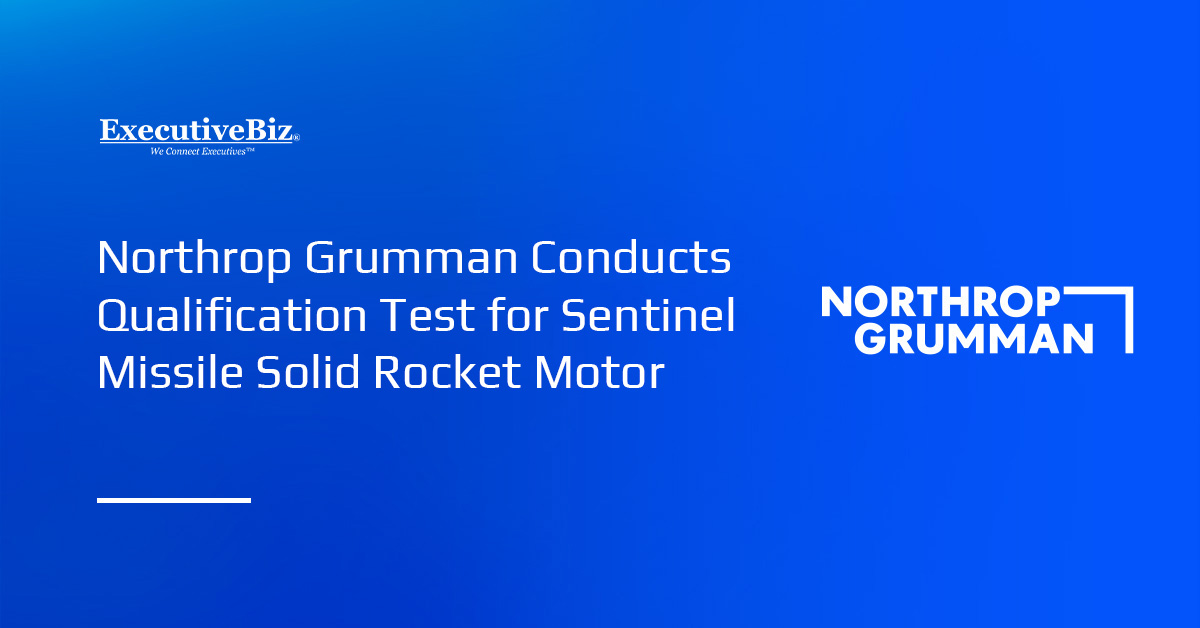Northrop Grumman has completed first qualification testing of a stage-two solid rocket motor for the U.S. Air Force’s Sentinel intercontinental ballistic missile, or ICBM.
The full-scale test, conducted at the Air Force Arnold Engineering Development Complex in Tennessee, focused on the thrust vector control system that steers the missile. The company said it used a vacuum chamber, which can simulate real-world conditions, to demonstrate that the motor would perform as intended.

The Potomac Officers Club’s 2025 Air and Space Summit on July 31 will bring together defense and industry leaders and experts to discuss challenges and opportunities in the air and space domains. Register here for the in-person event.
The test also enabled the Northrop team to compare data from the test with predictions from digital models.
Northrop Grumman’s Rocket Motor for Sentinel
The stage-two motor is one of three booster segments that make up the Sentinel missile. Northrop said its engineers developed the weapon system in a digital model-based environment, which could reduce costs and accelerate the design process.
“Developing the Sentinel Weapon System quickly is vital for national security,” explained Ben Davies, corporate vice president and president for defense systems at Northrop. “A digital-first approach helps us speed up the process and ensures the missile is mission-ready.”
“This test reflects our disciplined digital engineering approach and the continued momentum behind the Sentinel program,” Brig. Gen. William Rogers, Air Force program executive officer for ICBMs and director of the ICBM Systems Directorate at the Air Force Nuclear Weapons Center, commented. “We’re not just testing hardware — we’re proving that our models are accurate, our development timeline is achievable and the system will be ready to deliver when called upon.”
The Sentinel ICBMs are expected to replace the 400 Minuteman III, which have been in use for over 50 years.





